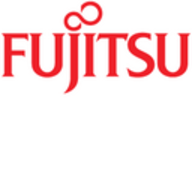


Hitachi Virtual Storage Platform and Fujitsu are top contenders in the enterprise data storage market. Fujitsu has the upper hand in feature offerings and comprehensive data management, while Hitachi is noted for cost efficiency and customer satisfaction.
Features: Hitachi focuses on performance optimization, automated tiering, and robust integration with virtual environments. Fujitsu is distinguished by its advanced data protection, cloud-compatible hybrid models, and granular management capabilities, offering superior compatibility and innovative data protection for complex infrastructures.
Ease of Deployment and Customer Service: Fujitsu offers seamless deployment with strong support throughout the setup process, enhancing user confidence. Hitachi provides a quick setup but lacks the depth of ongoing support, whereas Fujitsu's comprehensive customer service and deployment ease contribute to higher user reliability and satisfaction.
Pricing and ROI: Hitachi proposes competitive initial costs with strong ROI, offering scalable solutions for varied budgets. Fujitsu incurs higher upfront expenses, justified through high-performance outputs and extensive feature offerings. Despite Hitachi's affordability, Fujitsu's superior long-term value and feature-rich packages make it a worthy investment for seeking organizations.
| Product | Market Share (%) |
|---|---|
| Hitachi Virtual Storage Platform | 7.9% |
| Pure FlashArray X NVMe | 3.2% |
| Fujitsu | 0.8% |
| Other | 88.1% |



| Company Size | Count |
|---|---|
| Small Business | 15 |
| Midsize Enterprise | 11 |
| Large Enterprise | 12 |
| Company Size | Count |
|---|---|
| Small Business | 19 |
| Midsize Enterprise | 14 |
| Large Enterprise | 28 |
Pure Storage FlashArray//X is the world’s first enterprise-class, all-NVMe flash storage array. It represents a new class of storage – shared accelerated storage, which is a term coined by Gartner – that delivers major breakthroughs in performance, simplicity, and consolidation.
Fujitsu offers advanced technological solutions tailored to industry-specific demands. Recognized for robust performance and reliability, it facilitates a wide range of applications, providing users with flexibility and enhanced productivity across different sectors.
Fujitsu stands out as a leader in technology, integrating cutting-edge innovations that drive efficiency and elevate performance. Its offerings cover diverse areas, ensuring adaptability and seamless integration. Users benefit from its comprehensive approach, which combines state-of-the-art features with user-focused enhancements, addressing needs such as scalability and security.
What are the most important features of Fujitsu?Fujitsu finds applications in industries such as healthcare, finance, and manufacturing, where its adaptability and security features are critical. In healthcare, its technology supports patient data management and operational efficiency. In finance, it ensures secure transactions, while in manufacturing, it enhances workflow processes and data analysis capabilities.
RETHINK YOUR DEFINITION OF SPEED AND PERFORMANCE
With adaptive, guaranteed data reduction and a 100% data-availability guarantee, Hitachi Virtual Storage Platform F series helps you tackle complicated business challenges. Hitachi Data Systems (HDS) VSP F series delivers up to 4.8M IOPS with sub-millisecond response times.
Featuring legendary Hitachi reliability, VSP F series arrays are backed by the industries only 100% availability guarantee. For these reasons, 80% of the Fortune 500 choose Hitachi all-flash arrays to accelerate the performance of mission-critical applications like Oracle, SAP, Virtualization, Microsoft apps etc. With over 350 patents in flash technology, Hitachi’s innovative mix of flash hardware and software accelerates ROI with enterprise-class reliability and performance.
We monitor all NVMe All-Flash Storage Arrays reviews to prevent fraudulent reviews and keep review quality high. We do not post reviews by company employees or direct competitors. We validate each review for authenticity via cross-reference with LinkedIn, and personal follow-up with the reviewer when necessary.